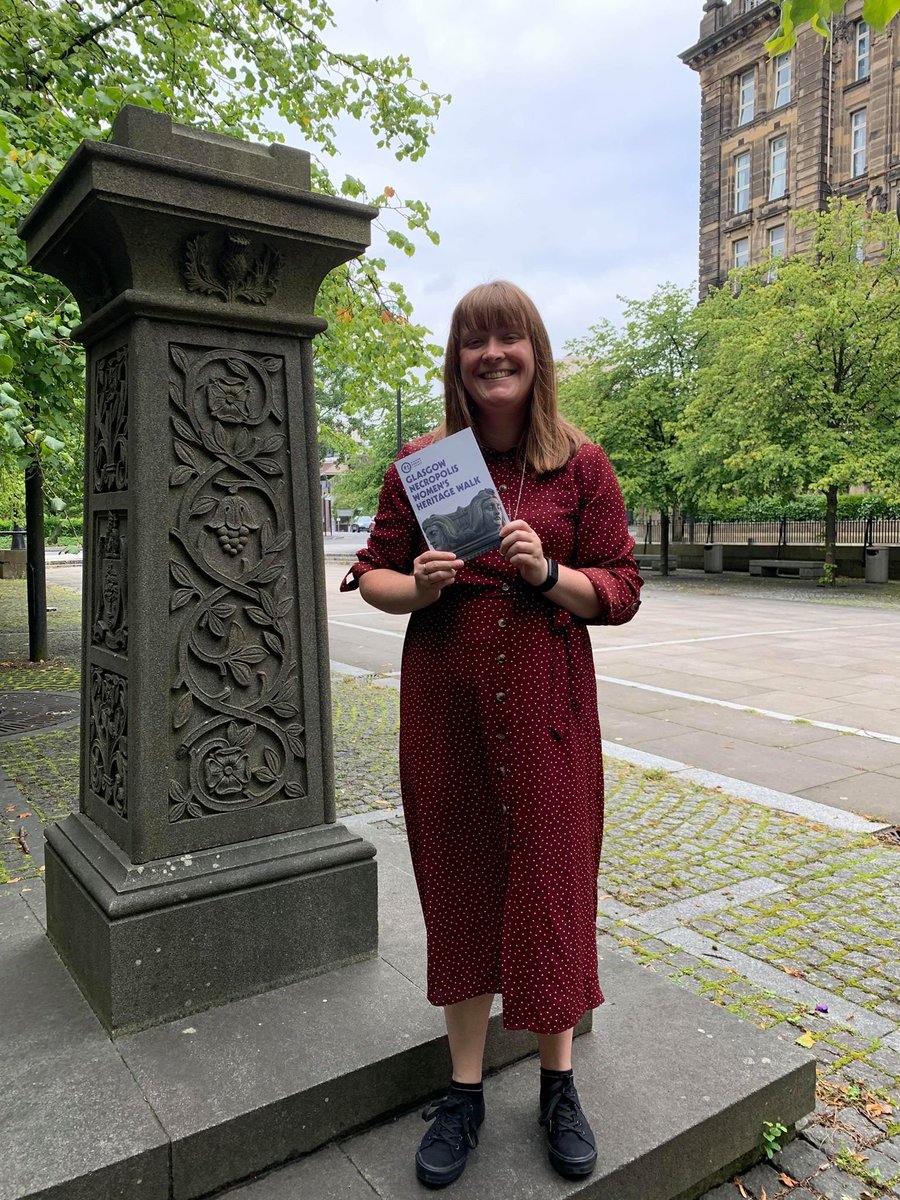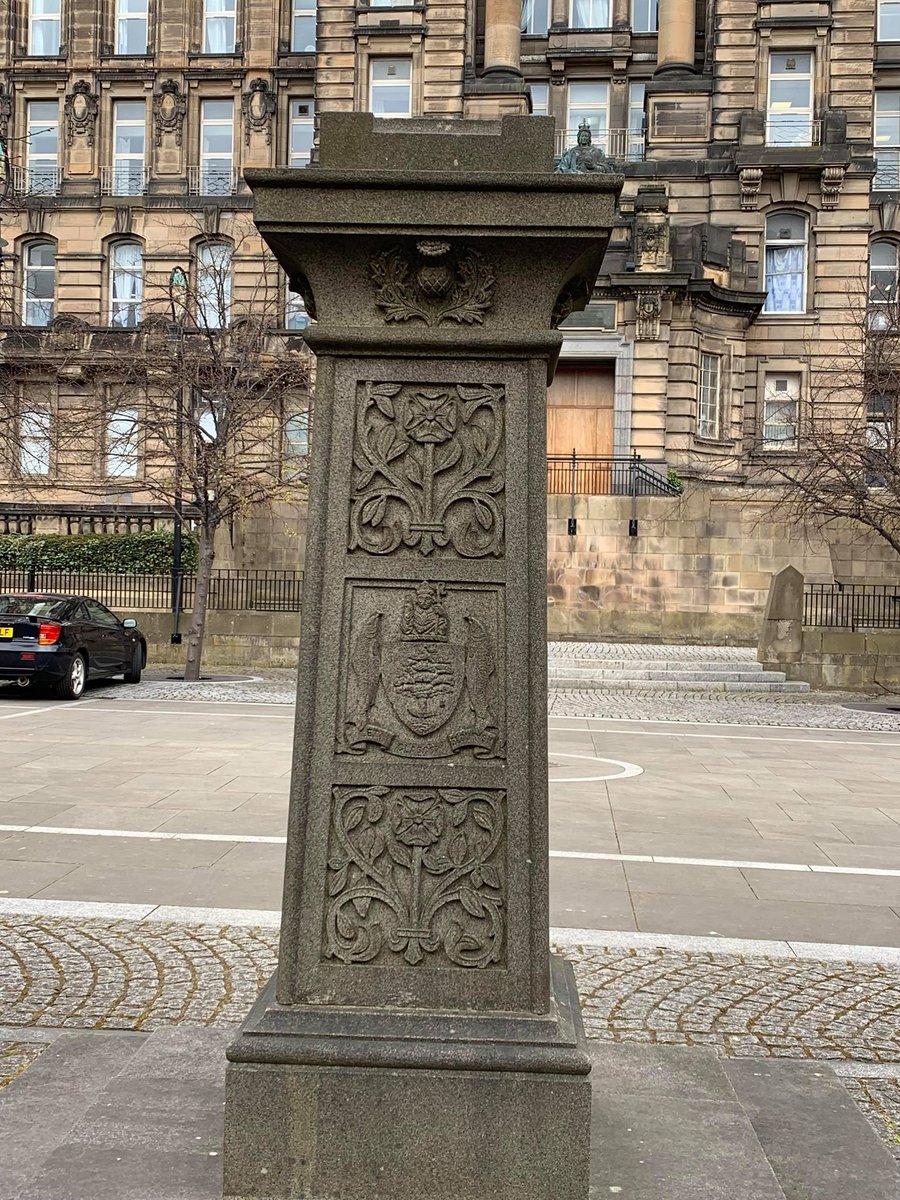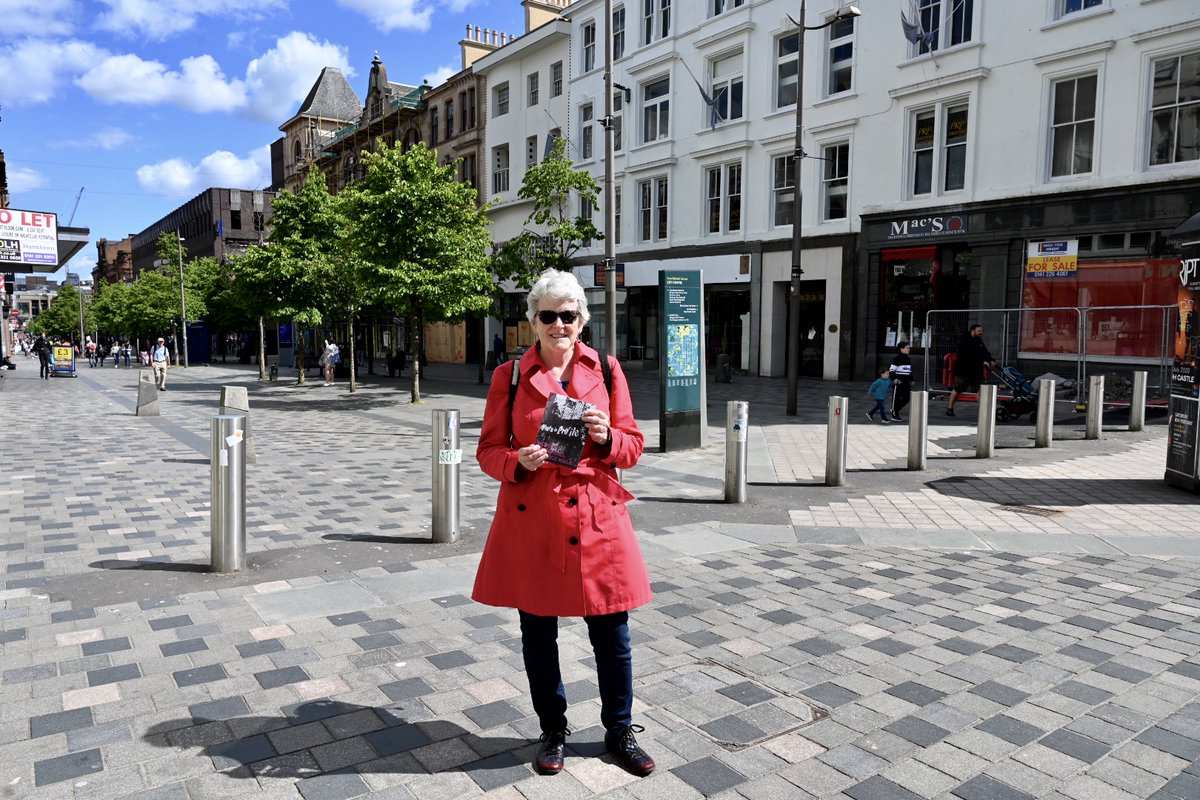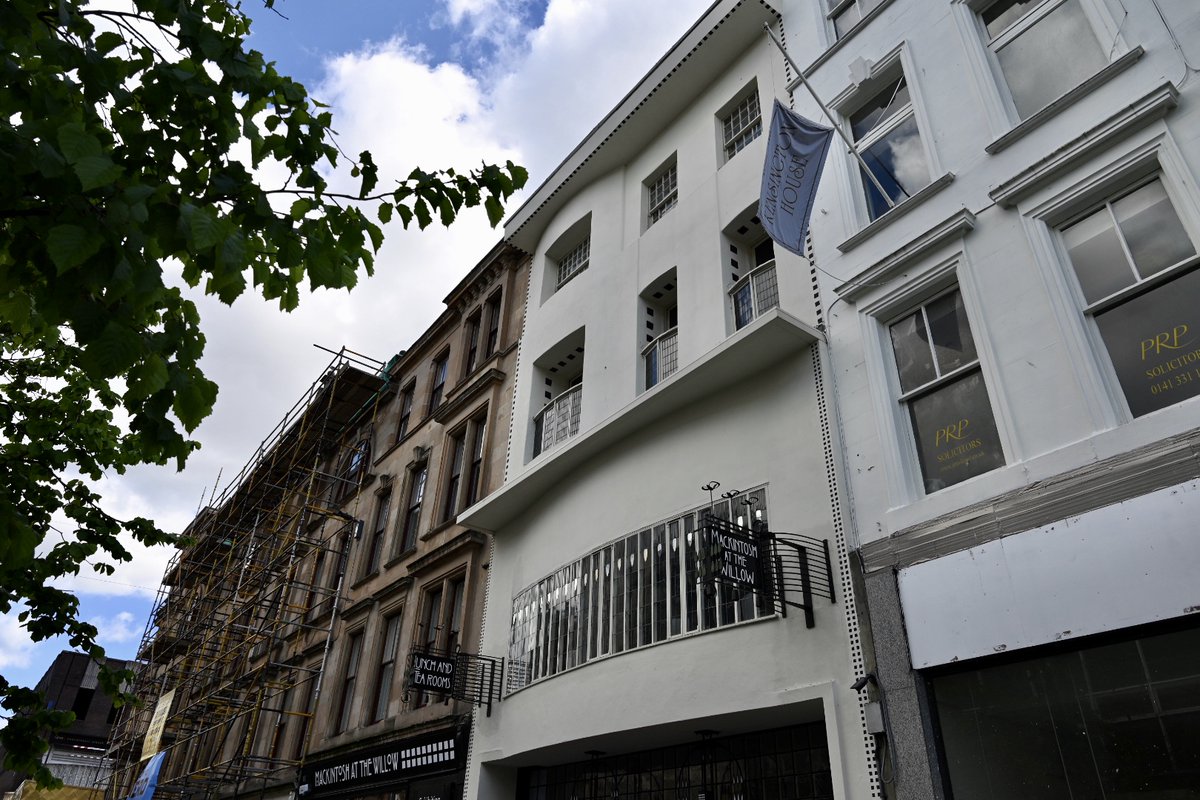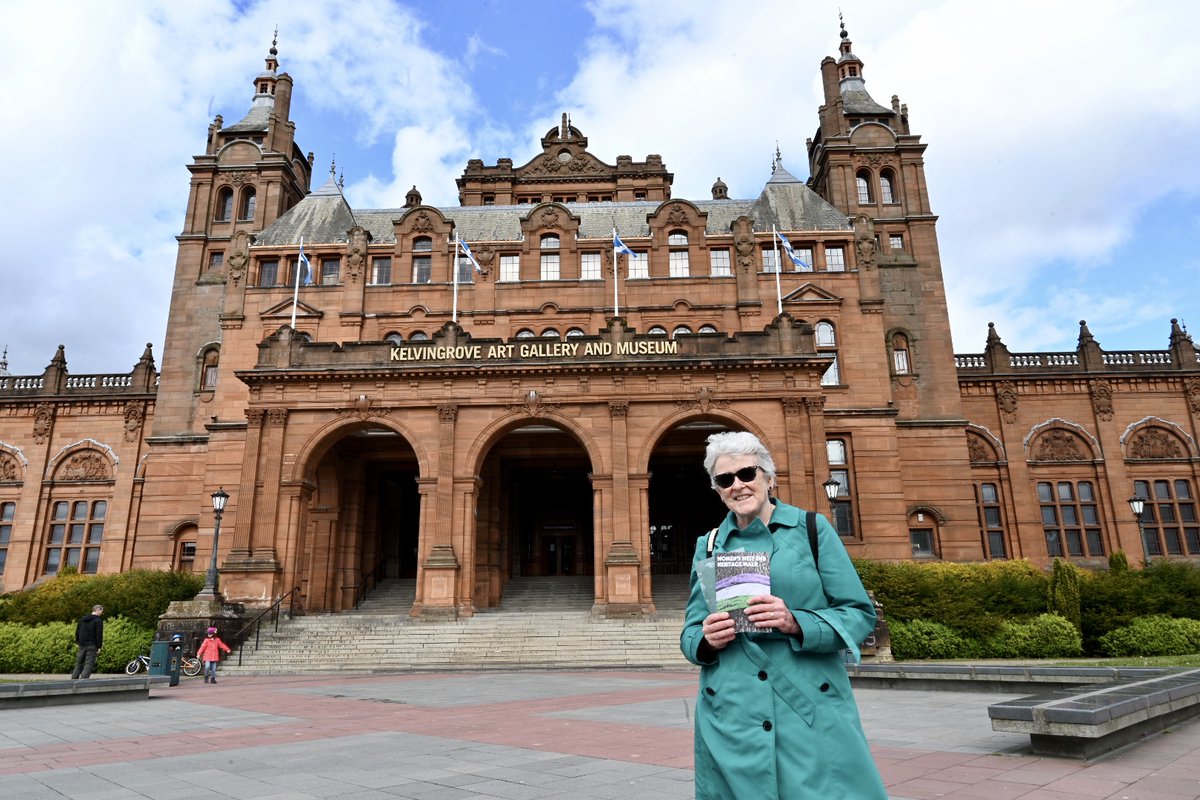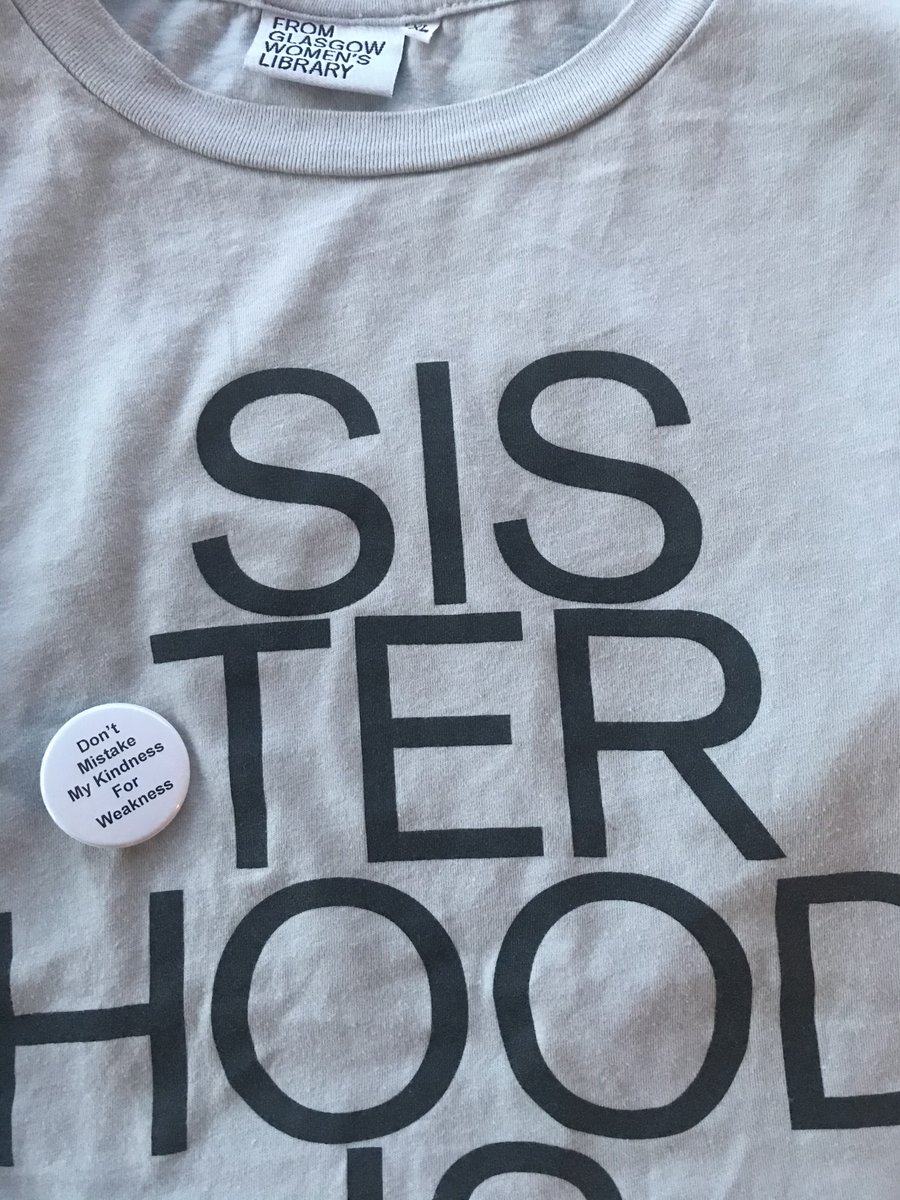
Hi everyone! I'm @LouBell, one of the Women's History tour guides at GWL. Sadly, we can't take you on any walks at the moment, so i've created this virtual version of our Merchant City tour. 
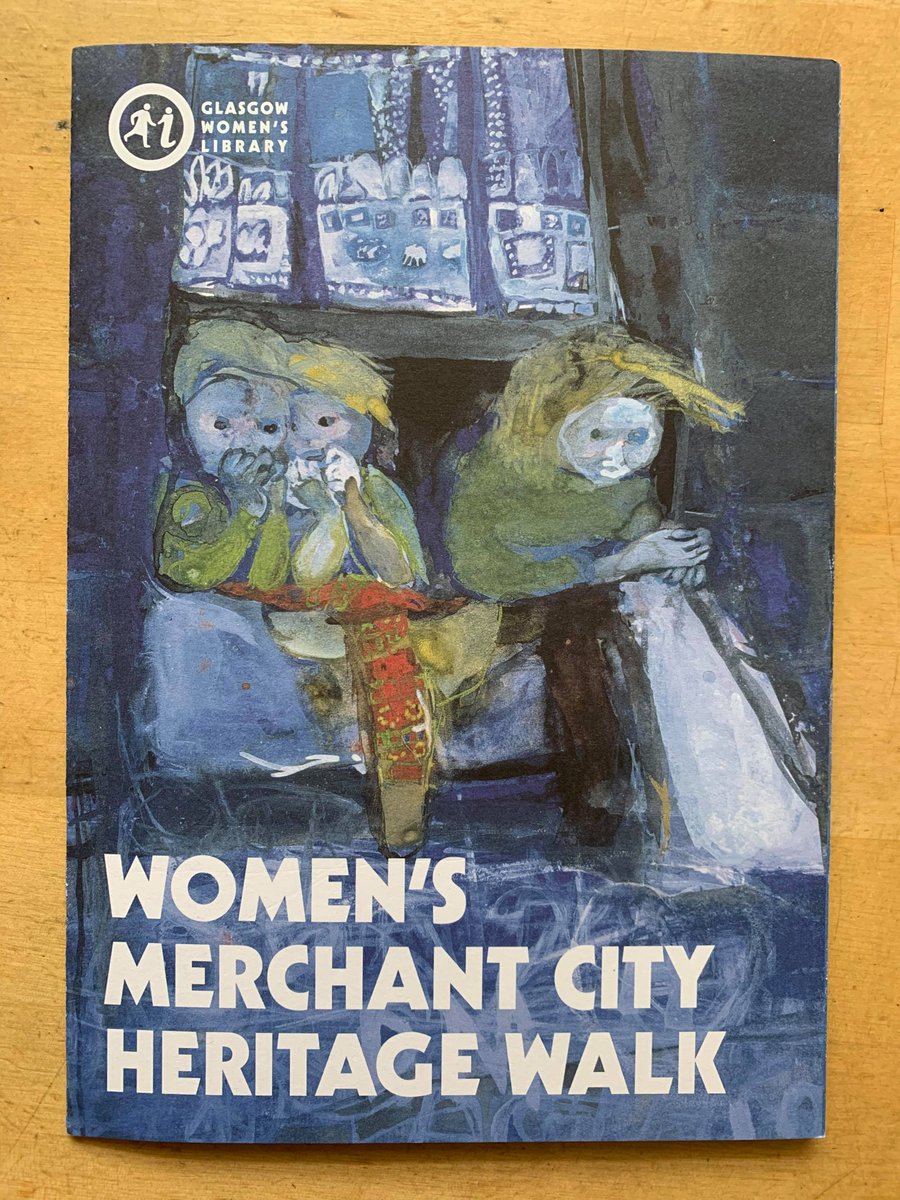
Normally there would be a photo of me at one of the stops on the tour, but i've unfortunately not been able to make it through to Glasgow recently. I miss it loads, and i'm sure some of you do, too!
This area of Glasgow was partly built by money made on the backs of slaves, suppressed men and women working in appalling factories. There are several walks and projects that discuss the links to the slave trade. But today we're going to look at the women who made their mark here
We start our tour at the upper edges of Merchant City, in the gardens in the centre of @UniStrathclyde campus. Previously, these streets were crowded, with ramshackle tenements, and poverty. 
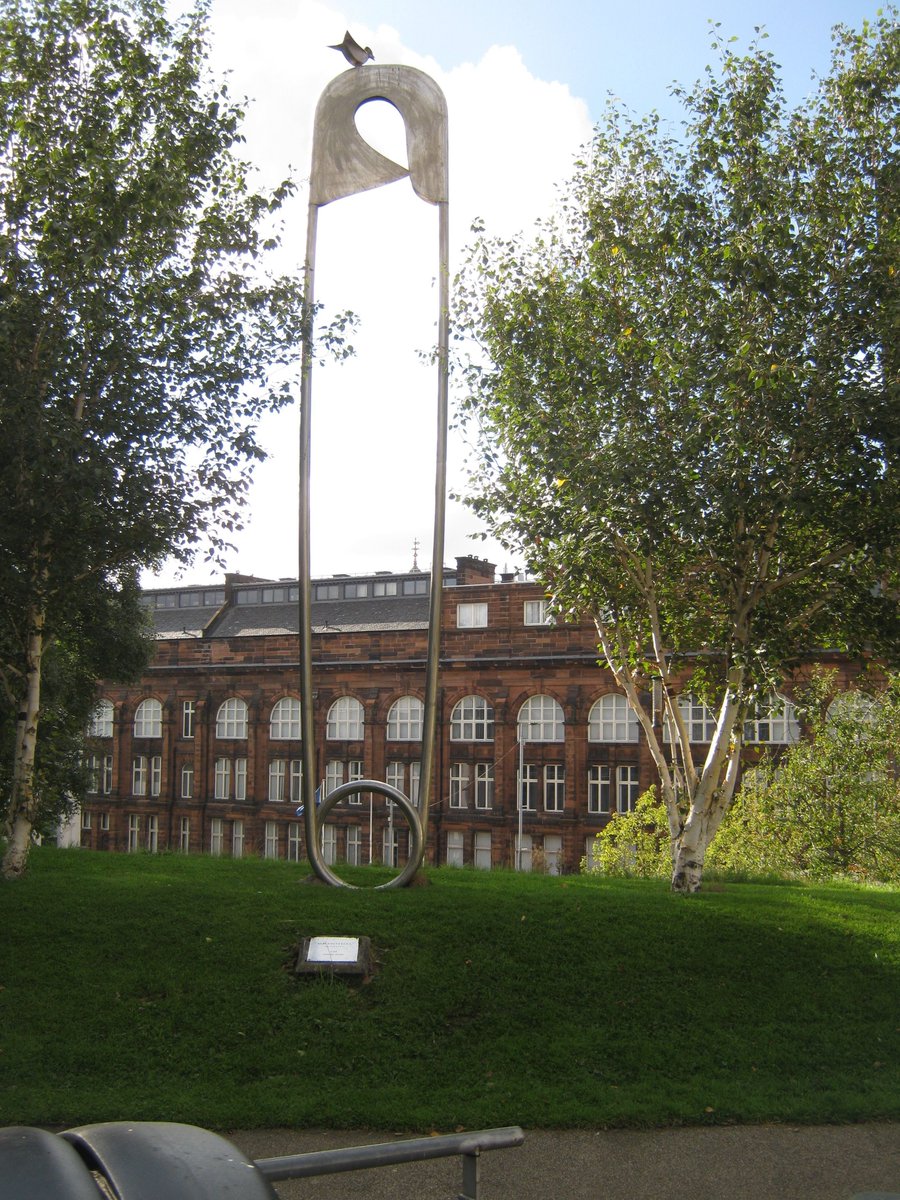
Joan Eardley (1921-63) had studios close to here. She was inspired by the people here and her work depicts the poverty of the families living in the area. The city fathers thought this was negative PR, but thankfully @GlasgowMuseums disagreed and displayed some of her work.
And if you want to read more about Joan Eardley, you can do so here: nationalgalleries.org/art-and-artist…
The tenements are long gone, as is the infamous Lock Hospital - used to treat women who contracted venereal diseases. Opened in 1805, 32,221 women were treated there in its 1st 100 years. It was demolished in 1955. There was no similar hospital for men, which some women protested
From 1860, another hospital was situated here: Glasgow Royal Maternity Hospital (which moved to the Royal Infirmary in 2001) Thousands of babies were born here. And if you've ever walked up that large hill leading to it, you won't be surprised that it was known as Induction Brae! 

The hospital had an international reputation for its midwifery training; advancements in pre- and neo-natal care were piloted and developed; caesarean sections were also performed successfully in the 1880s; and ultrasound was developed and piloted. 

Dr Nora Wattie was Glasgow's Principal Medical Officer for Maternity and Child Welfare. She set up a service which ran for over 3 decades & its services gained national/international recognition. In 1964, she was awarded Scotswoman of the Year Award for Child Welfare Work. 
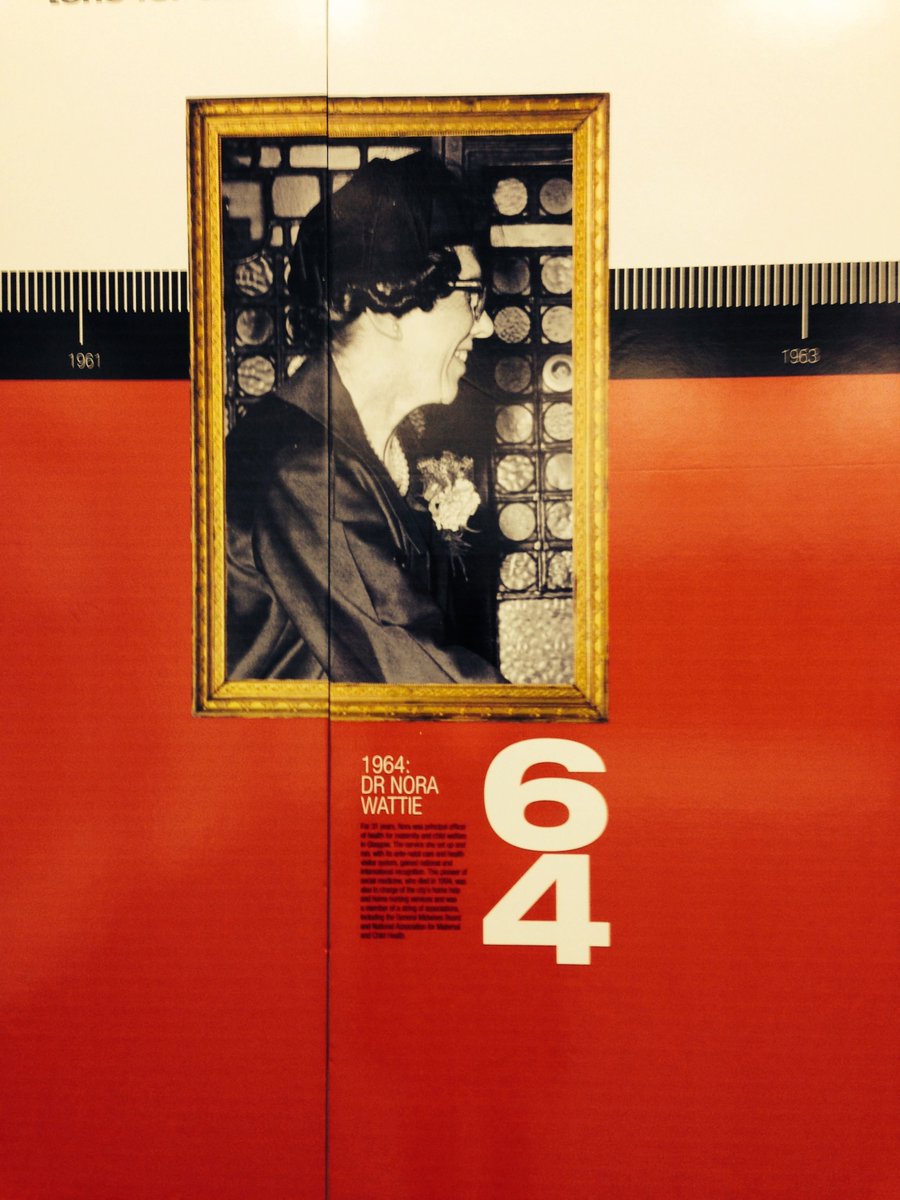
Our next stop is near to where we think the former spot of the Strickland Press was, where the Socialist paper 'The Word' was printed from 1938-1962. 
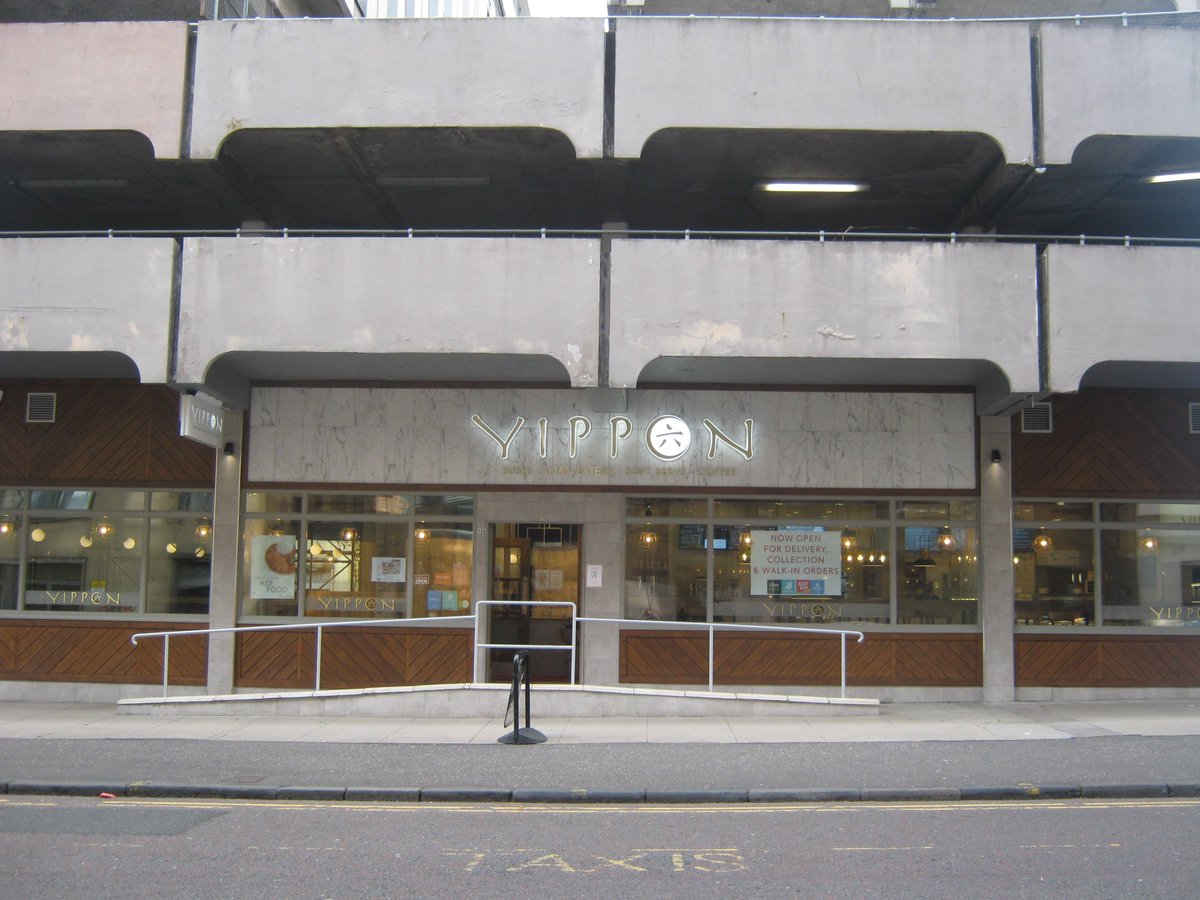
Jenny Patrick and Ethel Macdonald were instrumental in its production - working long, wageless hours & doing all the typesetting themselves at one point. Both women travelled to Spain at the height of the Spanish Civil War, where Ethel in particular gained particular prominence.
If you want to learn more about Ethel Macdonald and her time in Spain, there is a BBC documentary, and a book, called: An Anarchist's Story: The Life of Ethel MacDonald.
We're going to move on now to look at more women who have been involved in journalism and the media. Today, this building is home to the Herald News. Built in the 1930s, the Scottish Daily Express was produced here for 38 years, until the presses fell silent in 1974. 

Journalists and other workers were stirred to action & produced a paper, funded by their redundancy money, which highlighted workers views and rights - The Scottish Daily News. Dorothy Grace Elder was initially a featured editor within the co-operative that created the paper.
By her own admission, she was one of very few women on the editorial floor, which was the same of all papers then. In 1975, she led the staff in a work-in and turned out an edition where she was the editor. They sold copies on the streets of Glasgow and people rallied around them
Financial pressures eventually ended this work, six months after they had began.
Elder is one of the 1st pioneering female journalists that made it beyond the women's pages. She came to the public eye in the 70s, as a tv journalist on Reporting Scotland.
Elder is one of the 1st pioneering female journalists that made it beyond the women's pages. She came to the public eye in the 70s, as a tv journalist on Reporting Scotland.
Like many other professions, journalism too was classically male, so looking for early examples of women can be difficult. We do have:
Ann Simpson - The Scottish Herald
Ruth Wishart - The Scottish Sunday Herald
Jackie Bird - The Times
Lesley Riddoch - Harpies & Quines
Ann Simpson - The Scottish Herald
Ruth Wishart - The Scottish Sunday Herald
Jackie Bird - The Times
Lesley Riddoch - Harpies & Quines
Now, let's move on to Ramshorn, where we will tell you that tale of a Victorian scandal that grabbed the headlines! 
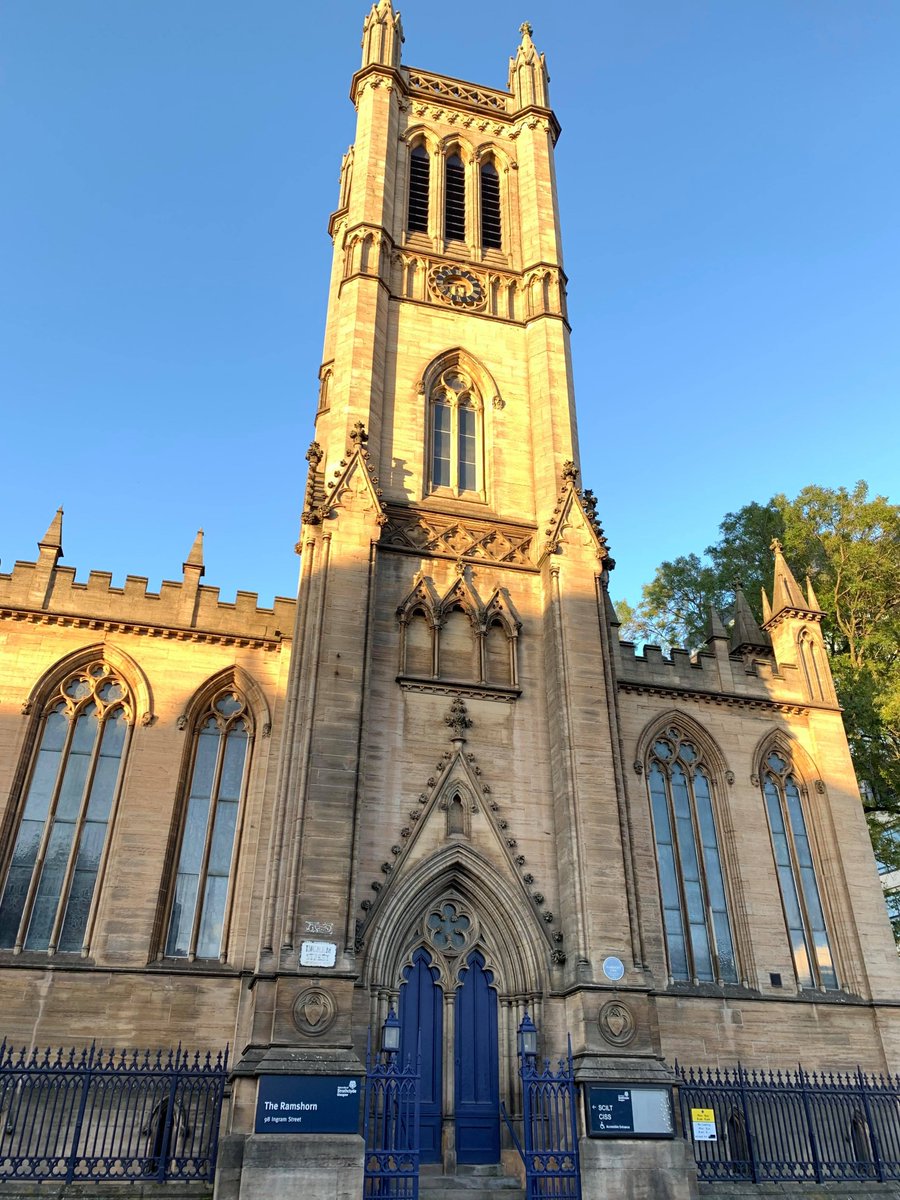
Walk into the graveyard next to the church until you come to lair five. In the Fleming family tomb lay the remains of Pierre Emile L'Angelier. When his remains were exhumed 2 days after his death (in 1857) he was found to contain enough arsenic to kill 20 men! 

Letters between him and "Mimi" were eventually traced back to a Miss Madeleine Smith of Blythswood Square. Love letters in nature, they begin to become increasingly distant, especially after Madeleine's parents arrange a marriage for her.
Arsenic was used for beauty purposes at this time, and around the time of death, Madeleine was discovered to have signed for some at a local druggists. She was seen around Blythswood Square the night of the death, but her movements at the time can't be fully accounted for.
She was arrested and, subsequently, put on trial. The murder trial became a sensational story - being reported as far afield as New York. Madeleine's dignity and coolness during the trial both won and lost her admirers in equal measure.
No conclusive evidence emerged to convict Madeleine and the Scottish verdict of "not proven" left her free to live out her days in London (where she married) and when her marriage disintegrated, she moved to America.
Further along Ingram Street, at number 205-207, stood the remarkable tea rooms of Miss Kate Cranston. The unique interiors were designed by Margaret Macdonald Mackintosh (and her famous husband...) which you can now see at @KelvingroveArt
The menus show that a special Rest Room for Business Ladies was provided at Ingram Street. It’s nice to imagine women meeting over a brew and getting a chance to discuss business.
Tearooms provided an alcohol free space to meet, at a time when the temperance movement was flourishing. These campaigns had gained popularity in 19th century Glasgow, where it was felt that many problems were perpetuated by the "demon drink"
If you walk down to Candleriggs, you will come to City Halls, where a particularly vocal campaigner for prohibition came to speak in 1908. Carrie A. Nation was known as the "bar-room smasher" and came from Kentucky to spread the word. 
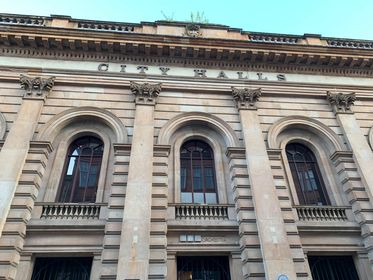
She was also outspoken in her call for enfranchisement of women! The temperance movement in Glasgow was instrumental in politicising women and garnering support for the suffrage movement. Links were also made between domestic abuse and alcohol.
Turning to Brunswick Street, a very different Merchant City appears. The area is full of bars and restaurants, but the architecture still hints at the past of mills and factories, mainly worked by women. 
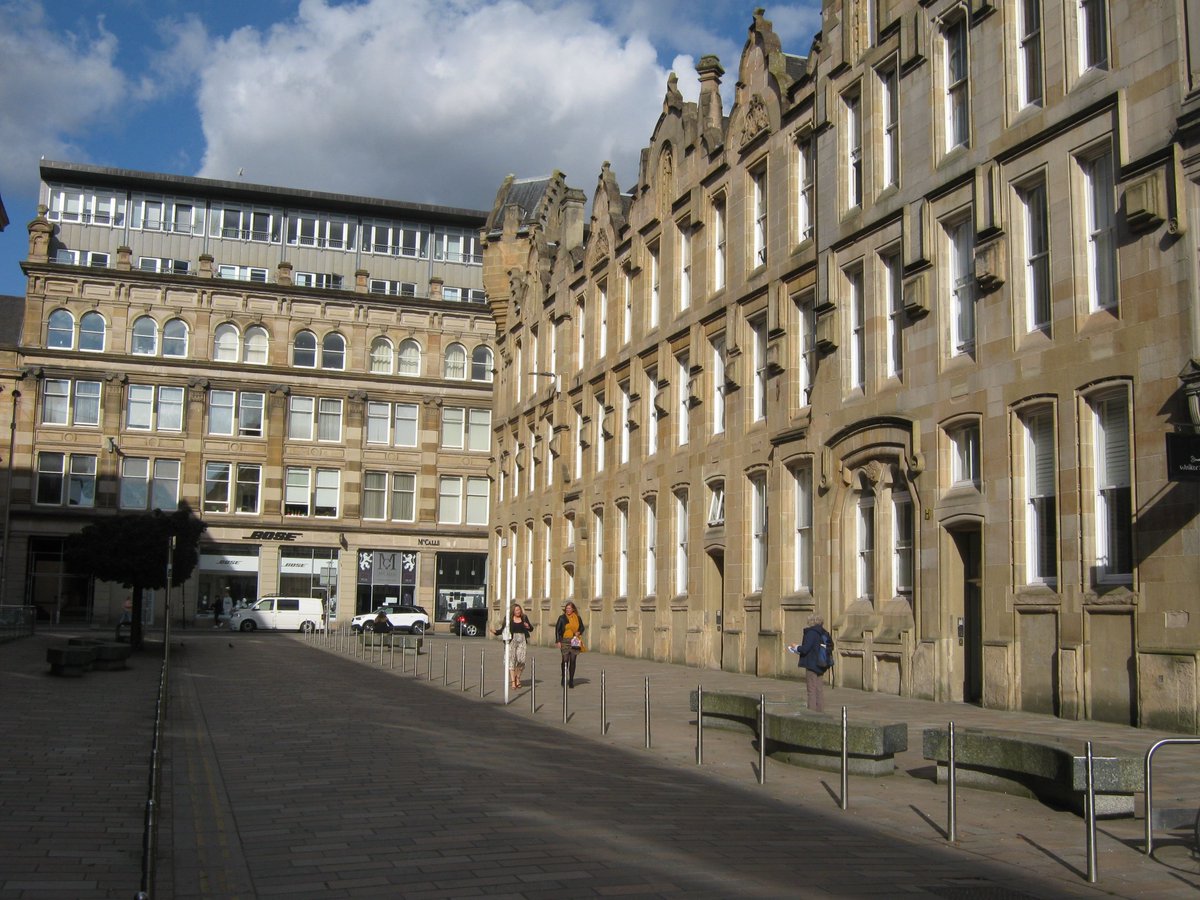
Working in factories was tough and dangerous. Behind the gates at number 102 was one of several clothes factories owned by Samuel Moorov - who, in 1930, was charged with sexually assaulting 19 female employees over a number of years. 
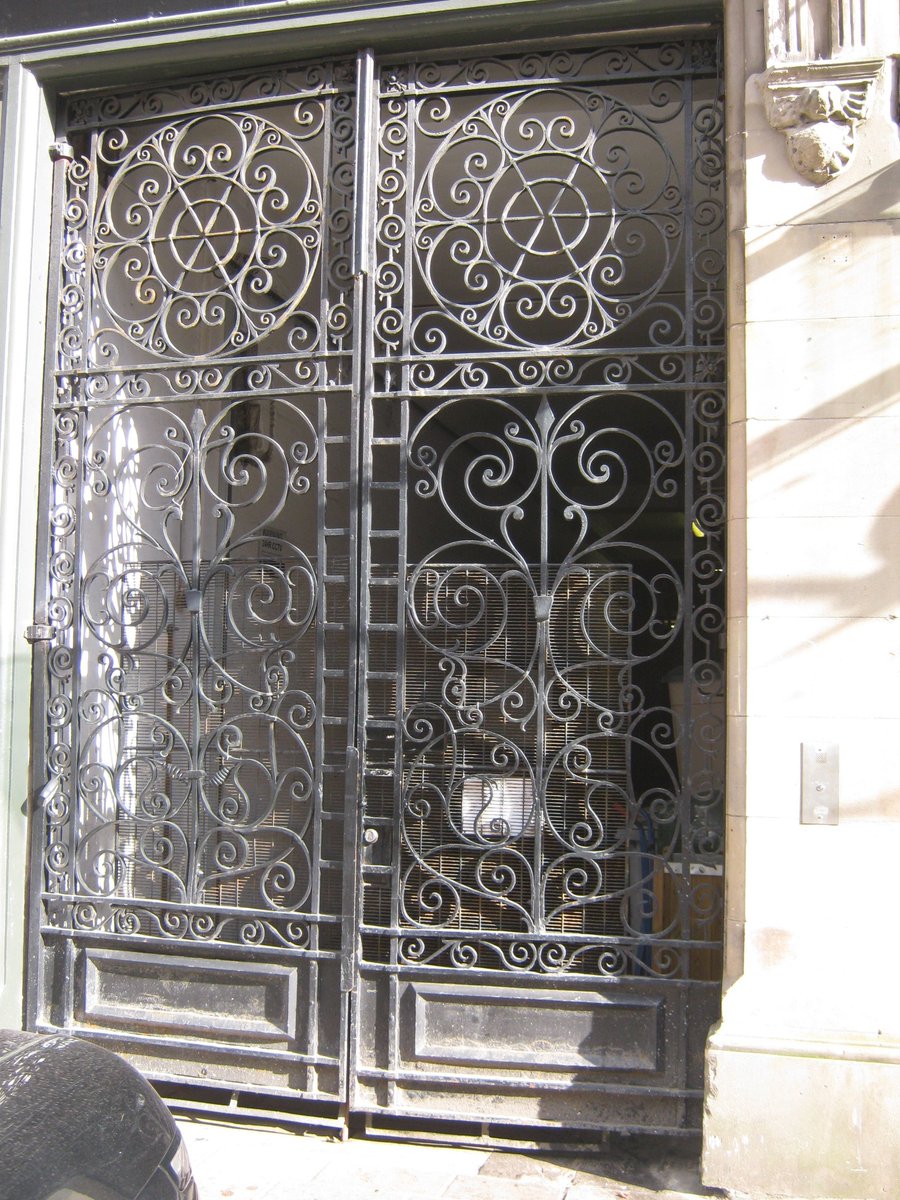
Two policewomen, Ellen Scollay and Ellen Webster, investigated the assaults and obtained a conviction against Moorov. He appealed on the grounds that there were no witnesses to the assaults, but lost his appeal in what is still known as "Moorov Doctrine of mutual corroboration."
Our next stop leads us to Trongate and the fantastic @BritPanopticon! Marie Loftus, born locally on Stockwell Street, trod the boards here. And her fame took her to London and beyond. On her return to Glasgow, fans queued around Trongate to catch a glimpse! 

Our final stop is the Mercat Cross. Designed by Edith Burnett-Hughes, the first practising female architect in Scotland. In the late 1920s, she was commissioned to design the cross, working with the sculptor Margaret Cross Primrose Findlay, who modelled the unicorn at the top. 

Solid, strong, and at the centre of the city, the building acts as a fine metaphor for the remarkable achievements of the women that we've talked about during this Twitter walk! 
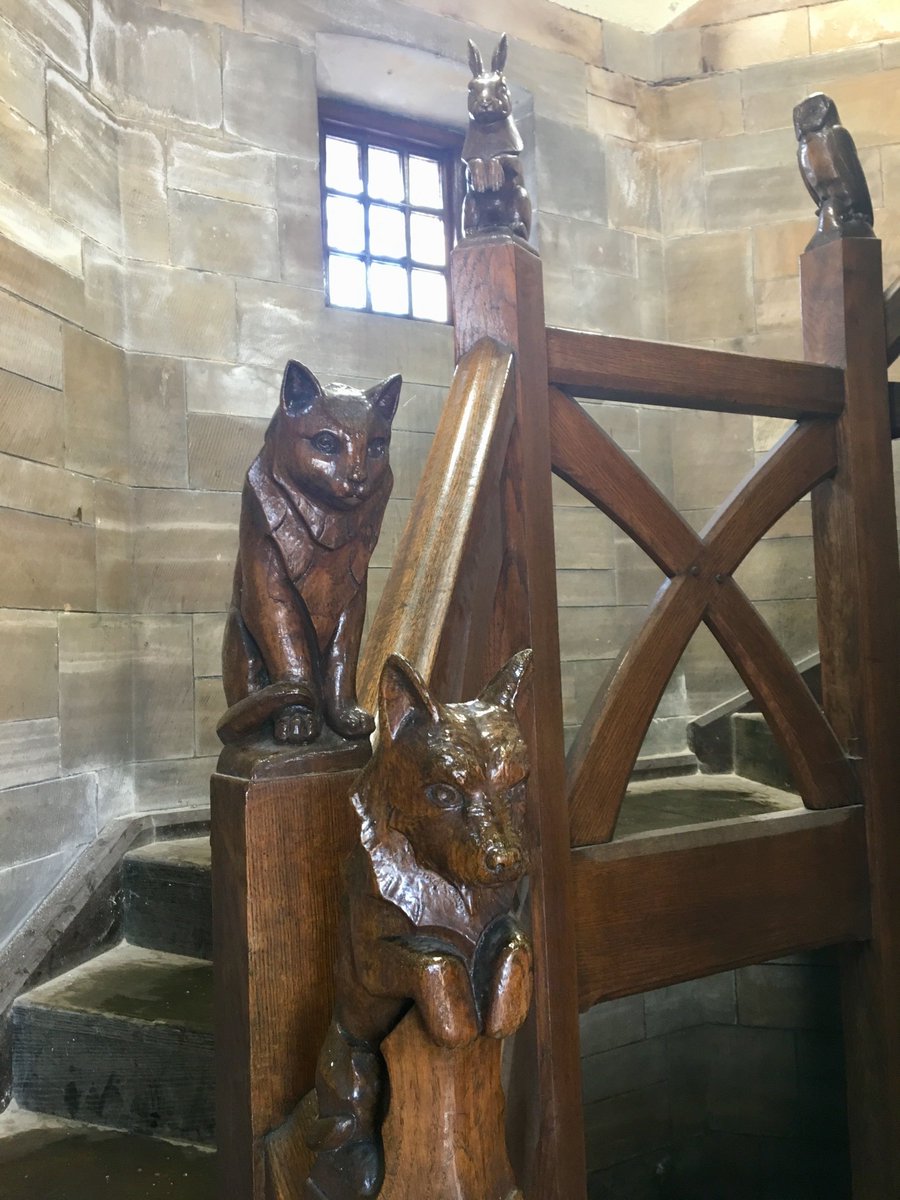
If you would like to download your own version of the map for this walk and take it out for yourself, you can do so here: womenslibrary.org.uk/discover-our-p…
And please do continue to share your stories of women and history that you find in your own area, using the hashtag #WomenMakeHistory and tagging us here @womenslibrary!
Finally, I would just like to say a big thank you to everyone for joining me on this virtual walk today! And please keep an eye out for our next Twitter walk!
• • •
Missing some Tweet in this thread? You can try to
force a refresh




